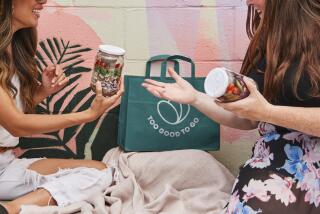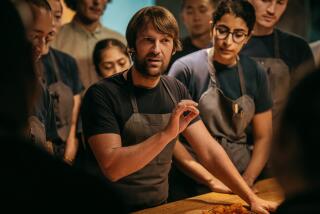Lessons learned from a month of 100-mile eating
- Share via
I embarked upon my month-long local diet with grand imaginings. I planned on learning more about my local foodshed, chatting with activist farmers about their crops and/or livestock, adopting healthier eating habits, and feeling more connected with my community, all while wearing peasant skirts and Heidi-esque braids. Most surprisingly, this all happened (albeit without the dramatic wardrobe change).
In many places, being a locavore would result in an unbalanced diet, as a harsh climate can limit produce. In sunny Southern California, I experienced the opposite problem. Flush with great vegetables, I ate little meat, not because it wasn’t available, but because the produce was so exciting. I tried sautéed radishes, ate some of the best-tasting fruit ever, and made so, so many frittatas. Most people might have considered these meals to be repetitive – my family did complain on occasion – but I thought it was thrilling. Then again, I have always preferred vegetables over meat. Moreover, there is the added benefit of these vegetarian dinners keeping my food budget down, as locally raised meat can be expensive.
More than the vegetables, I loved meeting the people who produced what I ate and I would never trade the connections I made for all the bananas in Central America. Jennifer Piette from Out of the Box Collective coached me through the first few weeks; Melissa Sorongon of Piedrasassi New Vineland Winery and Bakery helped me with my bread (or the lack thereof); and Teal Larson from Roots Organic Farm sold me lettuce every week.
My month of local food had many notable benefits – fruit, people, losing five pounds – but nothing’s perfect.
Over the past month, many people asked me why I would eat locally when research has shown that locavores create a larger carbon footprint. In “The Locavore’s Dilemma: In Praise of the 10,000 Mile Diet”, authors Pierre Desrochers and Hiroko Shimizu argue that driving a truck full of tomatoes 100 miles is less efficient, and therefore more damaging, than shipping a plane full of them halfway around the world. Yes, local tomatoes generate more greenhouse gas emissions, but the tomato will taste worlds better, support a small farmer instead of a corporation, and will build your food awareness.
In the same way that my local efforts have an environmental trade off, local food is not always the best way to go. This month, I bought my milk from Broguiere’s Farm Fresh Dairy, which bottles milk from Chino. Although this milk is local, it is not organic and comes from large scale dairies.
I tried to buy local food that maintained my food ideals—organic, family-owned, seasonal polycultures with pastured animals—but I couldn’t find a dairy within 100 miles that met these high standards. I would have preferred to purchase milk from one of the Northern California dairies that does fit my pastoral dreams, but my restrictive radius did not allow it. When only considering location, strictly local food often doesn’t go far enough (pun not intended).
As for cost, I discovered that being a locavore is not cheap. I am accustomed to spending $3.99 on a gallon of milk and now I was spending $3.45 on a quart. That’s almost four times as expensive! Still, there is a huge range in local food prices; a dozen eggs can be $2.50 or $6 and chicken prices range from $12 to $35. When something was exorbitantly expensive, I could almost always find a more reasonable option.
Even with some pricy items, I spent less money on food in June, during my 100-mile diet, than in May, with my usual 10,000-mile diet. Many generous friends shared local bounties from their gardens and kitchens but, more importantly, I could not buy any processed foods or my usual snacks. I was spending less because I was eating more efficiently.
So, am I encouraging anyone to be an undying locavore? No way. All diets should have some wiggle room and this one needs more than most.
Take it with a grain of non-local salt and try it yourself.
ALSO:
Here’s where the 100-mile diet began
A delivery service makes it easy, but costly
Great ricotta from El Monte rides to the rescue
More to Read
Eat your way across L.A.
Get our weekly Tasting Notes newsletter for reviews, news and more.
You may occasionally receive promotional content from the Los Angeles Times.










